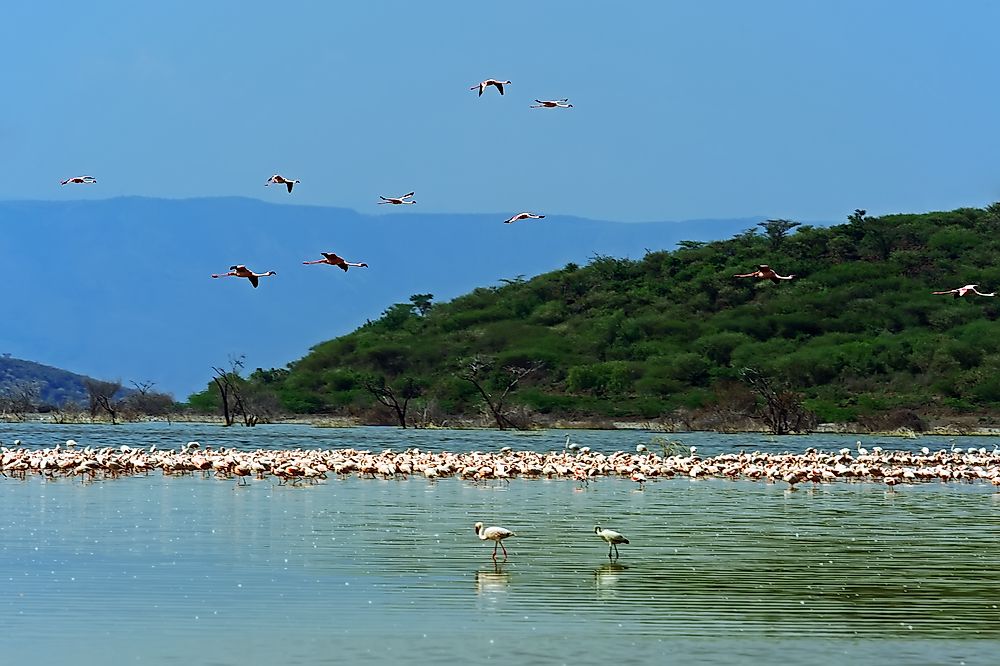What Are the Rift Valley Lakes?

The Rift Valley Lakes refer to a cluster of lakes lying within the East African Rift which spans all the way from Ethiopia to Malawi. Most of these lakes are among the largest, oldest, and deepest lakes on the planet today. The northernmost section of the Rift Valley features lakes from Ethiopia such as Lake Shala, Lake Abaya, and Lake Chamo among others. In Kenya, they include the likes of Lake Baringo, Lake Magadi, and others. Lake Victoria, stretching into Tanzania, Uganda, and Kenya, is also considered a part of the rift despite its location between two branches of the valley. Tanzania has, among others, Lake Natron and Lake Eyasi.
Formation of the Rift Valley Lakes
The formation of rift lakes is tied to geological action. Within a rift zone, such as the Great Rift alley, there is constant movement of the earth’s tectonic plates. These plates may push or pull towards each other depending on the type of force in play. Consequently, all this action causes depressions within the zone that eventually leads to the formation basins that fill up with water to become lakes. In fact, to this date, there is still fault action in Africa, and the rift valley, that may eventually lead to the formation of other basins within the rift.
Habitat of the Rift Valley Lakes
Most of the lakes within the valley, especially those in the Eastern Rift, do not possess outlets for drainage into the sea. Consequently, they have a high content of minerals that contribute to their alkaline nature. In Kenya, only three are freshwater lakes with the rest having salt water. The salinity of the water in these lakes is even more pronounced during the dry and hot season when water evaporates leaving behind concentrated minerals.
Only specialized creatures have been able to survive in the unforgiving conditions. A good example of such organisms are the cichlid fish species. With over 800 cichlid species discovered to date, this fish is easily the most dominant among the lakes. Researchers are speculating that more species of the same are awaiting discovery.
Other kinds of flora and fauna are so scarce that the World Wide Fund for Nature has marked most of the lakes for conservation. In some cases, like Lake Natron, the high salt content makes certain organisms thrive that make the water appear reddish or pink. Some lakes such as Lake Bogoria have a high number of beautiful flamingos who live around it.
Significance of the Rift Valley Lakes
The most obvious significance that these lakes have lies in the water resource they have.
In places where the water is fresh, the local population carries out fishing to sell or to feed their families. In the case of freshwater lakes, large scale-farming around the lakes is common which plays a huge part in feeding their respective countries.
For those lakes that cannot support plant or animal life, other economic activities take place. For example, the salty waters of Lake Magadi in Kenya allow for harvesting and processing of salt.
Aside from all these, the lakes also serve as popular destinations for local and international visitors who provide revenue and employment. For example, Lake Naivasha in Kenya is popular for sport fishing as well as vacationing.











